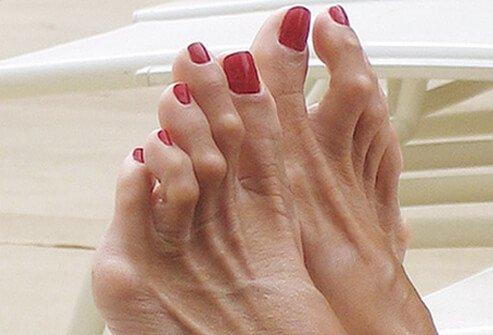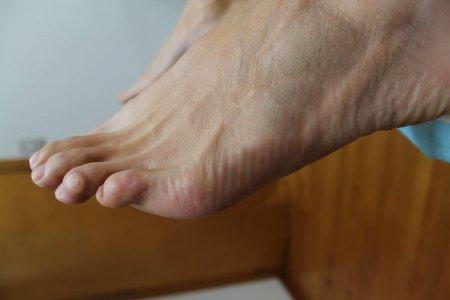CLAW TOES - TREATMENT AND PREVENTION
posted: Jul. 04, 2018.

A claw toe is a toe that is contracted at the PIP and DIP joints (middle and end joints in the toe), and can lead to severe pressure and pain. Ligaments and tendons that have tightened cause the toe’s joints to curl downwards. Claw toes may occur in any toe, except the big toe. There is often discomfort at the top part of the toe that is rubbing against the shoe and at the end of the toe that is pressed against the bottom of the shoe. Claw toes are classified based on the mobility of the toe joints. There are two types – flexible and rigid. In a flexible claw toe, the joint has the ability to move. This type of claw toe can be straightened manually. A rigid claw toe does not have that same ability to move. Movement is very limited and can be extremely painful. This sometimes causes foot movement to become restricted leading to extra stress at the ball-of-the-foot, and possibly causing pain and the development of corns and calluses.
What Causes Claw Toes?
Claw toes result from a muscle imbalance which causes the ligaments and tendons to become unnaturally tight. This results in the joints curling downwards. Arthritis can also lead to many different forefoot deformities, including claw toes.
What are the symptoms of claw toes?
When you have claw foot, the toe joints closest to your ankle point up, while your other toe joints bend down. This makes your toes look like claws.
In some cases, claw foot doesn’t cause any pain. In other cases, your toes might hurt, and you might develop corns or calluses or ulcers on parts that rub against your shoes.
Claw toes are sometimes mistakenly referred to as “hammer toes,” but they’re not the same thing. While the two conditions share many similarities, they’re caused by different muscles in your foot.
Treatment and Prevention
Changing the type of footwear worn is a very important step in the treatment of claw toes. When choosing a shoe, make sure the toe box (toe area) is high and broad, and can accommodate the claw toes. A shoe with a high, broad toe box will provide enough room in the forefoot area so that there is less friction against the toes. Other conservative treatments include using forefoot products designed to relieve claw toes, such as toe crests and hammer toe splints. These devices will help hold down the claw toe and provide relief to the forefoot. Gel toe shields and gel toe caps are also recommended to eliminate friction between the shoe and the toe, while providing comfort and lubrication.
Brought to you by Doctor John A. Hardy, owner of Toronto's foot clinic, Academy Foot and Orthotics Clinic.
